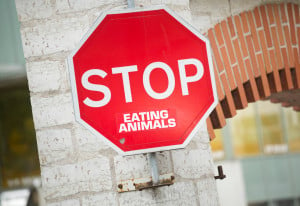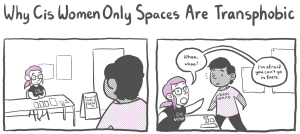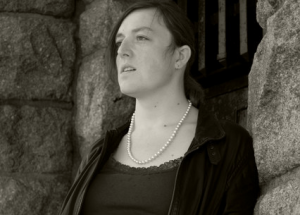
Source: Natural Awakenings
Have you ever been so angry at a situation that you felt at a complete loss to take action? Or maybe you’ve held onto an event, feeling, or thought process to remind you not to repeat the same mistake again?
I have.
I used to hold onto every experience that made me feel stupid, fat, serious, selfish – basically anything that exposed “weakness.” And for years, I was stuck behind these walls that I had created for myself.
Even though I wanted to see what life was like on the other side, I couldn’t, for all I tried, get there.
I eventually realized that what was holding me down were the experiences that I had yet to let go of.
So if you find yourself in a similar situation, here is what I’ve learned about how to let go.
1. Isolate the Emotion
Getting out of an unhealthy relationship, I blamed everything on my ex.
I charged him for every feeling that I felt, and I made sure that everyone knew it.
I was angry at him for making me feel the way that I did in the relationship, and all I wanted was an apology. I wanted a random e-mail that said, “Dearest Cynthia, I’m so sorry for how I treated you.” It didn’t have to be long, but I wanted him to feel badly.
What I needed was to know that I mattered to him – to know that our relationship wasn’t just one of those quick rain showers where you don’t even need an umbrella, but that it was, indeed, a full-on torrential downpour.
Blaming others for how we feel is a sign that we’re really avoiding the actual issue: dealing with our emotions around the experience.
There’s a great quote by the American Buddhist nun Pema Chodron that says, “Feel the feelings. Drop the story.”
What that means is that when we let go of the story around how we’re feeling, or the narrative attached to the emotion, then we can let ourselves experience the feeling.
By doing so, we begin to see the story as separate from how we feel.
When we isolate the feeling is when we can begin to work through the emotion.
What I do is draw a line down a piece of paper. On one side, I put the story that I tell, and on the other, I put the emotion. This way, it’s super clear to me what the emotion is.
Your experiences and stories are valid and are worth telling. But sometimes, we need to focus a little bit more energy on what we’re feeling and how to fix the hurt.
2. Believe You Can
I remember stomping my feet and saying to my mother, “No, I don’t want to go” on my first day of camp.
Or the time I didn’t want to go to a reading tutor or a ballet class.
I can tell you that although my mom got me to budge by being stern, it didn’t change the outcome. I didn’t want to go, so when I got there, I didn’t learn or enjoy any of it.
And as I’ve gotten older, I’ve noted that when I get the best out of something, it’s when I’m open to it.
To let go of experiences that are holding us back, we have to be ready and willing to do so. None of it will work if we don’t truly want to move on from these experiences.
As Napoleon Hill said, “Desire is the starting point of all achievement.” We can’t change unless we want to.
This may sound difficult. But all you need is just the slightest bit of willingness to see things differently to fully let go.
We can make this happen by observing our thoughts and interactions, and when we’re about to respond in the same way, telling ourselves the same stories, we stop. And we think, “I am willing to see this differently.”
Gabrielle Bernstein in her book May Cause Miracles uses affirmations as a way to promote willingness. The affirmations that she uses are “I am willing to see this differently” and “I am willing to see love.”
When you find yourself going down the blame lane, replace those thoughts with these kinds of affirmations.
3. I’m Sorry, Friend
In a financial planning class I’m taking, our first meeting centered on the psychology of money and our fears around it. We were tasked with thinking about what we wanted our relationship with money to look like.
As expected, most all of us had very different ideas of how we wanted our relationship to be in the future than what it was in the past.
But before we could jump in and get going, we had to forgive ourselves for the things we had been harping ourselves on in the past – like getting into debt, not having a savings account, or losing money.
An easy way to start the process of forgiveness is to think of yourself like you would a friend.
If you can treat yourself with compassion and empathy, you’ll see that you were just doing the best that you could. You’ll see that it’s impossible to know everything before jumping into something.
A good exercise to try is to divide a piece of paper into three. On the left, put the experience. Next to it, write the emotion. Then, in the last column, start with “I forgive myself for…”
Some examples here could be “I forgive myself for not taking care of myself, for not respecting myself, not making myself a priority. I’m sorry for not looking out for myself.”
I forgive myself.
4. Bring on the Shades
So, you’ve gone through all the steps and you’ve cracked open and are now bouncing over walls and ready to find the open field.
But when you get to the open field, what do you do when you get there? What do you want?
A great exercise is to look at where you’ve been, what you’ve been doing, and what you’ve been getting, and then what you want for the future. You can do this for any area of your life where you’re feeling held back.
It can start with something like “I’ve been feeling _____, so what I’ve been doing is _____. As a result, I’ve been getting ____.”
Or “I’ve been afraid to take action, so what I’ve been doing is ____. As a result, I’ve been getting ____.”
Then write your future: “I’ll be feeling ____, and what I’ll be doing is ____ to enthusiastically move forward in life. As a result, I’ll get ____, and I’ll _____.”
When we create new actions, we start to see new results and become a magnet for all that we want in our lives.
***
I didn’t learn to let go until I was in my thirties.
I held my cards close to my chest because I thought that these experiences were supposed to protect me from repeating patterns.
What I didn’t know then was that by keeping them around, what I was doing was seeing them, interacting with them, and acknowledging them daily.
But I’ve learned to live past them – to acknowledge them for what they were, take what I needed from them, and to move on.
You can, too!
[ultimatesocial_facebook custom_class=”fb-btn-us”] [ultimatesocial_twitter custom_class=”tw-btn-us”]
Want to discuss this further? Login to our online forum and start a post! If you’re not already registered as a forum user, please register first here.
Cynthia Kane is a Contributing Writer for Everyday Feminism. Over the last year and a half, she’s relearned the following: how to jump up and down when she’s happy, cry when she’s sad, laugh when something’s funny, take a compliment, smile at strangers, and be open to the fact that everyone is going through it all the time. For more, visit her website or follow her on Twitter @cynkane. Read her articles here.
Search our 3000+ articles!
Read our articles about:
Our online racial justice training
Used by hundreds of universities, non-profits, and businesses.
Click to learn more
Most Read Articles
- « Previous
- 1
- …
- 30
- 31
- 32



















